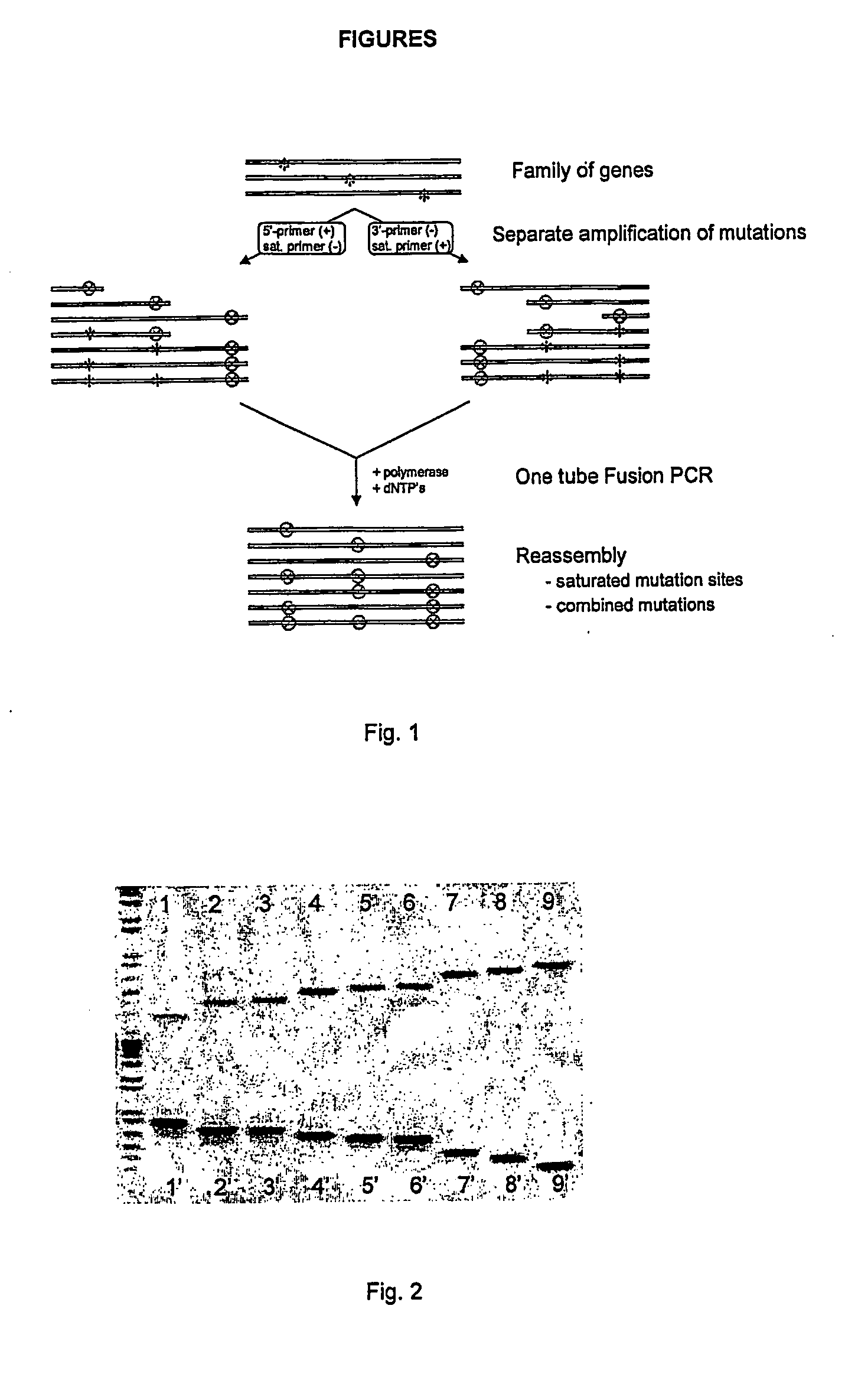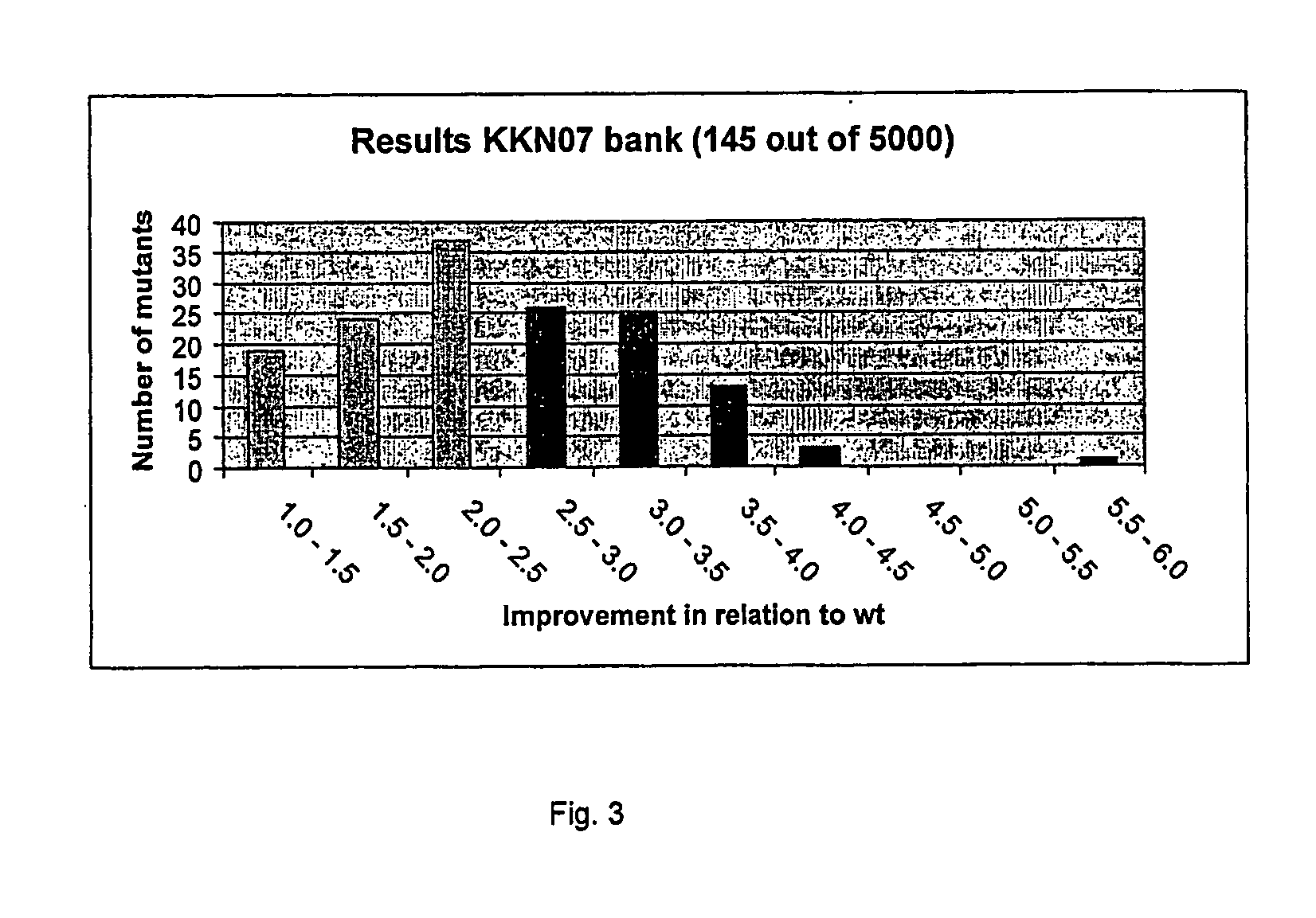Process for preparing variant polynucleotides
a technology of polynucleotide and process, which is applied in the field of process for preparing variant polynucleotides, can solve the problems of not being able to model, many attempts to alter the properties of enzymes by this approach have failed,
- Summary
- Abstract
- Description
- Claims
- Application Information
AI Technical Summary
Benefits of technology
Problems solved by technology
Method used
Image
Examples
example 1
Preparation And Screening Of An Error-Prone Library Of O. anthropi L-amidase
[0053] An error-prone PCR was performed on the Ochrobactrum anthropi L-amidase gene (see SEQ ID No 1) using the Diversify™ PCR Random Mutagenesis kit from Clontech (Palo Alto, Calif. USA) according to the manufacturer's instructions. The PCR products were cloned In the Eagl / HindIII sites of the vector pBAD / Myc-HisC (Invitrogen Corporation, Carlsbad, Calif. USA) and transformed to E. coli Top10F cells (Invitrogen Corporation, Carlsbad, Calif. USA). Clones were first screened on MTP and CFE's of a subset of clones were further screened (see Experimental). Improved mutants were sequenced to determine the modified position(s). The modified positions of seven improved mutants are indicated hereinafter V52A, F93V, T143A, T193P, N212D, N981 / L124P, K13BR / G234V (see SEQ ID No 2).
example 2
Mutagenesis And Recombination Of Improved Mutants By Mutation Primer PCR
[0054] Saturation mutagenesis at sites discovered after screening error-prone mutagenesis libraries will introduce all 20 amino acids into these positions. Saturated forward and reverse primers were designed for each mutation of the seven improved mutants obtained in Example 1. The saturated primers are designed with three N's at the codon of the amino acid to be mutated
[0055] As can be seen in FIG. 1 two separate PCR reactions for each mutation site were performed 1) using a forward saturated primer in combination with a universal reverse primer, and 2) the reverse saturated primer in combination with a universal forward primer.
[0056] The PCR products of these separate PCR reactions (see FIG. 2) were mixed in equimolar amounts and assembled by polymerase. The products of this so-called fusion PCR reaction were subsequently amplified in an error-prone PCR. The DNA products were cloned in the Eagl / HindIII site...
PUM
| Property | Measurement | Unit |
|---|---|---|
| Fraction | aaaaa | aaaaa |
| Fraction | aaaaa | aaaaa |
| Fraction | aaaaa | aaaaa |
Abstract
Description
Claims
Application Information
 Login to View More
Login to View More - R&D
- Intellectual Property
- Life Sciences
- Materials
- Tech Scout
- Unparalleled Data Quality
- Higher Quality Content
- 60% Fewer Hallucinations
Browse by: Latest US Patents, China's latest patents, Technical Efficacy Thesaurus, Application Domain, Technology Topic, Popular Technical Reports.
© 2025 PatSnap. All rights reserved.Legal|Privacy policy|Modern Slavery Act Transparency Statement|Sitemap|About US| Contact US: help@patsnap.com


